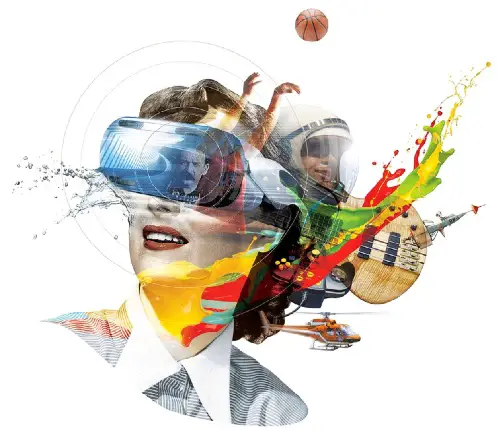|
TRANSLATE THIS ARTICLE
Integral World: Exploring Theories of Everything
An independent forum for a critical discussion of the integral philosophy of Ken Wilber
 David Christopher Lane, Ph.D.
Professor of Philosophy, Mt. San Antonio College Lecturer in Religious Studies, California State University, Long Beach Author of Exposing Cults: When the Skeptical Mind Confronts the Mystical (New York and London: Garland Publishers, 1994) and The Radhasoami Tradition: A Critical History of Guru Succession (New York and London: Garland Publishers, 1992). David Christopher Lane, Ph.D.
Professor of Philosophy, Mt. San Antonio College Lecturer in Religious Studies, California State University, Long Beach Author of Exposing Cults: When the Skeptical Mind Confronts the Mystical (New York and London: Garland Publishers, 1994) and The Radhasoami Tradition: A Critical History of Guru Succession (New York and London: Garland Publishers, 1992).SEE MORE ESSAYS WRITTEN BY DAVID LANE The Future is Virtual and the Virtual is NowNotes on the Digital FrontierDavid Lane
Ironic as this may sound, VR is all about being attentive to the present moment and the environment that is surrounding you.
One of the greatest benefits I have received in teaching College these past 35 years is that students tend to be more current with what is the latest trend (for better or worse) in technology. For example, I got chided the other day by a bright student for comments I had made earlier in the year on the most popular of crypto-currencies, Bitcoin. I don't exactly recall what I said, but I emphasized being cautious about investing in such things, as they are extremely volatile. I remember too well the tech bubble of the late 1990s and how many stock speculators ended up losing millions of dollars. The student then explained that she had bought Bitcoin at $3,000 dollars, despite my skeptical comments, and that it was now priced at $14,000 plus. “See, Professor Lane, how wrong you were?” I complimented her on making such a fast return on her investment, but again emphasized that she should expect ups and downs and to be careful with her earnings. Yet, the student's larger point was that I was mistaken in my earlier doubts about Bitcoin and that she was happy she took the risk. I too was happy for my student's four-fold windfall, but I was much more pleased that she had learned an important lesson: professors can always be potentially wrong and students should never abdicate their own critical faculties to authority figures. Of course, it may well be that Bitcoin may sink from its current heights (or, rise much higher?), but the greater point is to think for one's self and take responsibility for the choices we make and to weigh out the pros and cons about the information we receive. When I used to teach an upper division class entitled Science and Religion at California State University, Long Beach, I summarized in one sentence the key to critical thinking: “The ability to admit to being wrong.” As Karl Popper realized early on when comparing the theories of Marx and Freud with those of Albert Einstein, science should always have a no-escape hatch whereby one's hypothesis lives and dies on evidence and not merely posturing beliefs which can accommodate almost any sort of disconfirmation. In sum, Einstein's theory of relativity is scientific precisely because it can be falsified; it can be shown to be wrong. Whereas with much of Marxist and Freudian theory, nothing gets refuted, per se, but rather ideologically spun away or justified. I bring this up as a preface since “being potentially wrong” is why I find Jaron Lanier's three latest books (You Are Not a Gadget, Who Owns the Future? and his latest, The Dawn of the New Everything) on the cyber landscape to be so refreshing.  Jaron Lanier Jaron Lanier is famous for creating the breakthrough video game, Moondust, in the early 1980s which was designed for the Commodore 64 computer and which generated a lot of buzz in Silicon Valley for its artistic and musical overlay. He is also known for being one of the early pioneers of virtual reality, co-founding VPL research in the 1980s. Although Lanier still works on VR as an Interdisciplinary Scientist at Microsoft, he is becoming increasingly well known as an acerbic critic of digital utopianism. He is particularly critical of Kurzwellian hype over the future Singularity and most pointedly on the addictive qualities inherent in social networks, such as Facebook. He clearly saw how corrupting and disorienting the Web would become, if humans were allowed to be anonymous players who didn't face the consequences of their words or actions online. One of his most profound insights is how social networks tend to devolve into “us” versus “them” clan behavior which lead, almost invariably, to increased polarization across a whole spectrum of associated interests—ranging from religion to politics to economics to ethnic relations. As Lanier lamented in his recent interview for The Verge[1]: Empathy can be turned to terrible ends because people behave like jerks when they turn into tribes or packs. The problem with the online world today is that to maximize engagement, you need to maximize emotional engagement, and the emotions that are most engaging are the negative ones. Yet, despite his contrarian credentials, he is a strong advocate of virtual reality and what it could do for human well being, especially in developing deeper personal interactions in a whole host of imagined environments. Twenty-five years ago when virtual reality was first becoming widely publicized, I didn't think much of its potential, even though I did enjoy the futuristic graphics in the 1992 movie, The Lawnmower Man, despite the fact that the plot was mostly Hollywood drivel. My pessimistic view of VR changed several years ago when I tried Google Cardboard, Oculus Rift, and other headsets. As I wrote in 2015 in the article, The Avatar Project, “I felt like St. Paul on the way to Damascus. I was shocked as I was teleported to another realm. Even though I knew Google Cardboard (which uses your smart phone as its fundamental hardware) was still a very primitive device, I immediately realized that the future I dreamt about decades ago had arrived and that it was only going to get better, much better.” My optimism about all things VR has only increased in the past couple of years. One of the chief reasons for this change in my attitude is seeing the potential of VR and what it could do for education, medicine, sports, and entertainment. Being able to virtually simulate a task before actually doing it is transformative, as anyone who has done VR surgery or aviation can readily attest. Yet, what has really drawn me into the future potential of all things virtual is watching my oldest son, Shaun, become adept at playing a variety of VR interactive games, such as Echo Arena and Unspoken. Shaun has gotten so good, in fact, that just six months ago he won an all expense paid trip to New York City to compete in the first ever Oculus Rift Unspoken tournament sponsored by Microsoft stores. Out of a field of nearly 1000 competitors nationwide, Shaun secured 4th place and a nice tidy cash prize. This motivated him even further and he practiced for months to win a trip to Oakland, California to compete in the North American Championships, where he made the finals and won 3rd place winning $1,500.00 dollars. This plus earning almost $50 dollars each week for online competitions meant that he was more or less a professional cyber athlete in the newly emerging field of eSports, where competitors worldwide play interactive video games (such as Counterstrike and PUBG) for increasingly large sums of money. Before watching my son, Shaun, play I never even knew that such endeavors were so popular. I am told that Poland is home to the biggest eSport happening on earth, where each year gamers from around the globe compete for hundreds of thousands of dollars. In the city of Katowice, Poland, nearly 200,000 fans descend on the vast Spodek Arena to watch players battle it out on League of Legends, StarCraft II and other events. I wouldn't have believed the wild enthusiasm for eSports unless I witnessed it myself as I did several weeks ago at the Oracle Arena in Oakland. The crowd watching their respective stars in Counterstrike and PUBG was massive and I had to plug my ears on more than one occasion because the roar and cheering was so loud as to be almost unbelievable. ESports fans seem even more enthusiastic for their teams than those who watch regular sporting events such as football or baseball. I mention all this because the new wave of competitive gaming is taking place within virtual reality, which has the potential to utterly transform sports as we know it and not only for the competitors but for those watching. It is now possible to don a VR headset and actually be fully immersed on the court with the players themselves—even having the ghostly ability of passing right through them—and not interfere with their play. Imagine, if you will, watching an NBA game with LeBron James of the Cleveland Cavaliers driving for the hoop as you “pretend” to guard him (again having no real, physical impact) as he passes right through your avataric body while slam dunking the ball. You are right in the heart of the action and can witness things like never before, feeling a deeper sense of involvement that was previously unimaginable. VR sports is just the tip of a computational iceberg. In VR, the opportunities are almost limitless. But herein lies a great danger, since VR also has the potential for a very dark side. Jaron Lanier is well aware of this, and he appeared flummoxed this past week in London when asked about how criminals and sociopaths could manipulate virtual reality for nefarious purposes. Lanier readily admit such could be the case and he warned that we will have to be vigilant in making sure that VR is used positively. We shouldn't be naïve about this either. I remember the innocent days of the early Internet, which was mostly used by those with educational affiliations where spam was exceptionally rare and commerce was mostly non-existent. After the development of the World Wide Web by Tim Berners-Lee in 1989 and the evolution of browsers to better access data (from Mosaic to Netscape, etc.), the floodgates opened up and the Net was taken over by all sorts of questionable elements. Statistically speaking, it is estimated that over 50 percent of all email today is junk, even reaching as high as 71 percent in May of 2014. We are quite literally swamped in an informational sea of spam.
We are data rats in a digital maze and we sometimes remain oblivious to how we are being manipulated by preset algorithms.
VR too is not immune from this same type of data infection, though most likely it will take on novel iterations. Lanier has long bemoaned what has happened to the Internet, which has become more and more dominated by five extraordinarily large companies: Google, Facebook, Apple, Microsoft, and Amazon. We are moment to moment leaking out the most intimate details of our lives to massive cloud servers, which are beyond our control and which, in turn, use that very information to shape (in a Skinnerian fashion) our behavior. We are data rats in a digital maze and we sometimes remain oblivious to how we are being manipulated by preset algorithms designed to make us click this or that button (whether for “likes” or for products we feel compelled to buy on a whim). Lanier's warning shot across the bow is that with VR (since it is still in its infancy) we have a chance to harmonize our digital worlds with our humanity. For Lanier, VR is all about human interaction. But in order for that to happen we need to look back at what we haven't achieved with the Internet. As Lanier explains, “In the '90s I was the chief scientist of this consortium called Internet2, trying to figure out how to make the Internet scalable, and we thought we were doing the best possible thing for the world. And I just wonder, what did we achieve with all this work? All of these lives that were devoted to this thing, and it sometimes seems to be tearing the world apart. We might have to start over. It might really be that bad. But I really hope not. I really think that if we can just change the financial incentives so that somebody like Facebook is making money from helping people do creative and wonderful valuable things, rather than from being paid to manipulate them by third parties, it might correct itself. I think there's still hope for that.” Yes, it would be great if we could refashion the Internet with a built in micropayment system and give individuals more control over their digital destiny, including our varied privacy concerns. I fear that it may be too late for such a cyber metanoia, but with VR we still have a chance since it is a technology that is ultimately all about “presence” and being acutely conscious of one's surroundings and those who enter into the same region, even if enveloped in different avataric forms. As Takashi Torisu elaborates, “Presence is crucial to participants feel sense of being in a virtual environment. Enhancing presence as a psychological phenomenon can offer participants a special subjective experience, rather than the purely observational experience like that of television or film. Presence is composed of three dimensions: (i) social presence relates to a sense of “being there”; (ii) personal presence connects to feeling of “being there with others”; and (iii) environmental presence presents the existence of virtual space.” Ironic as this may sound, VR is all about being attentive to the present moment and the environment that is surrounding you. I have long noticed that VR and meditation have similarities, since both only come to fruition when one is fully attentive. Last night, for instance, I was using Oculus Rift and found myself standing on the moon looking at the vast expanse of the cosmos. Even though I had a headset on, it seemed like I was looking out for thousands of miles. It was so mesmerizing that I felt as if I was undergoing a momentary satori—all of which was being triggered by a magical device designed to trick my brain into believing it was actually “there.”  Mikey Siegel Mikey Siegel, a pioneer in using the latest gadgetry to track us back to our core selves, raises a most interesting and pregnant query, “Can we imagine the devices on our desks, in our pockets, and on our wrists actually helping us right now in this moment to bring us back to this experience and to help facilitate the deepest most profound experience of life?”[2] Well, I know that in VR that such a possibility not only exists in the future, but exists right now. Yes, all sorts of games and applications are also available as well, but in each case VR demands your attention and that is why it is fundamentally different than most other technological innovations. And, yet, Jaron Lanier's sadness about what has happened to the Internet makes me pause and think that VR could also go down the rabbit hole and turn that which is positive upside down. As Lanier confesses, “I mean, I feel like it's [The Internet] such a failure on so many important levels, that it's conceivable that people will decide it's over and try to do some other form of digital networking. The Internet might be remembered as a failed thing. It breaks my heart to even think that, and I hope it isn't true, but I'm beginning to wonder.” Maybe there is still hope yet for a technology that retains a human face. As the November 16th issue of the Economist rightly summarizes, “Perhaps the most fitting of Mr Lanier's 52 definitions of VR is that it is 'a preview of what reality might be like when technology gets better'. Technology is improving. Whether reality does too depends on the technologists in charge and the power of society to shape their vision.” But, as I write these last lines, my youngest son Kelly has just taken off his Oculus Rift headset, with the sweetest smile saying “Wow, Papa, I feel so blissful after that Guided VR meditation. Let's do it together so we can share what it is like living on another solar system.” “I am enough of the artist to draw freely upon my imagination. Imagination is more important than knowledge. Knowledge is limited. Imagination encircles the world.” --Albert Einstein, Saturday Evening Post, 1929 NOTES[1] Adi Robertson, "VR pioneer Jaron Lanier on dystopia, empathy, and the future of the internet", The Verge, Dec 8, 2017. [2] Mia Quagliarello, "Silicon Valley Gets Spiritual: Consciousness hacking and tech's search for your soul", about.flipboard.com, December 8, 2017. GUIDED MEDITATION SPACES ON VR |